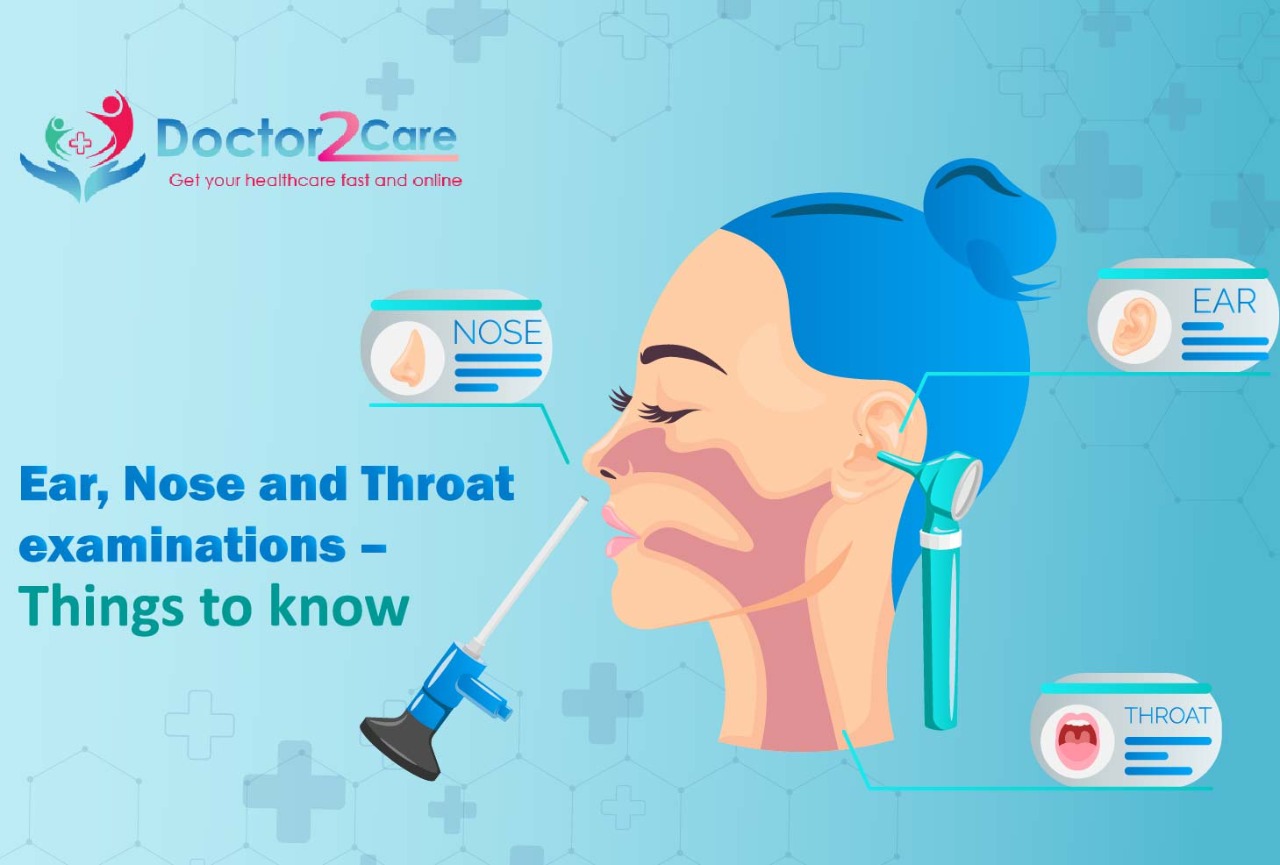Ear, Nose and Throat examinations – Things to know

The ear, nose and throat form delicate and three of the most important organs of the body. Any disturbances or disorders in these three organs can lead to other diseases which can disturb the flow of life. Therefore if you notice any abnormal symptoms around or in your ear, nose and throat it is advisable that you consult a doctor right away. Considering the current pandemic scenario, stepping outdoors is a bit of a challenge. You can consult ENT doctor online at the comfort of your home.
Having said that, this article can prove beneficial in gaining more insight into ear, nose and throat examinations. Read along...
Ear examinations
The examination of the ear includes assessment of hearing and ear deformities including the appearance of the organ. Here are some details –
History
Given below is a list of issues that can lead to ear this orders as follows –
- Ear surgeries in the past
- Head injury
- Systemic disease including cardiovascular disorder, multiple sclerosis, stroke, etc.
- Classic symptoms of ear disease such as deafness, pain or otalgia, tinnitus, vertigo, discharge or otorrhoea
- Family history of deafness
- Atopy or allergies in children
- Use of Ototoxic drugs such as cytotoxic, antibiotics, diuretics and more
- Exposure to intense noise
Signs and symptoms
Some of the common signs of abnormality that can indicate ear disorders are –
- Additional cartilage tags
- Skin conditions in the external canal and pinna
- Science of trauma to the pinna
- Scars from the previous surgery
- Inflammation or infection in the external canal along with discharge
- Neoplasia and suspicious skin lesions on the pinna
- Pits or preauricular sinuses
- Deformities in the shape and size of the pinna
Basic examinations
Some of the basic hearing tests include –
- Rinne's test: a part of the tuning fork test, Rinne's test includes turning a fork and holding it vertically straight with its nearest prong away from the patient’s external auditory meatus at a distance of 1 cm.
- Weber's test: a part of the tuning fork test, Weber's test is performed in conjunction with Rinne’s test. A vibrating fork is placed on the middle of the forehead of the patient and is asked whether any sound is audible or not.
- Free field voice testing: a whispering procedure from 40cm.
Throat examinations
The examination of the throat includes an assessment of the oral cavity and nearby areas. Following are some details –
History
An increase of throat disorders family history is considered along with general and dental history, including external or internal injuries, birth deformities and past surgeries. The patient is also tested for consumption of tobacco or alcohol to detect the roots of the throat disorder.
Inspection
To learn if the concerned patient is suffering from a throat disorder the following inspection procedures are carried out –
- Examination of the larynx and nasopharynx the use of a flexible fibreoptic nasendoscopy or a mirror
- Inspection of the soft palate and uvula
- Examination of the mouth and tongue
- Inspection of the tonsils and the back of the tongue
- Examination of the buccal area including gingivolabial sulcus
- Analysis of the floor of the mouth to detect masses or submandibular duct stones
- Analysis of the base of the tongue to detect the presence of tumours
Nose examinations
The examination of the nose includes assessment of the function, sense of smell, airway resistance and evaluating the condition of the pharynx and the mouth. Given below are some essential details –
Symptoms
Some symptoms of nasal disorders include –
- Exclusive snoring due to nasal obstruction
- Rhinorrhoea or runny nose
- Loss of smell
- Sinusitis induced facial pain
- Sneezing
- Airway obstruction
History
Nasal disorders can be induced from the following –
- Smoking
- Occupational hazards
- Past surgeries
- Past traumatic experience
- Pets
- Allergies or atopic diseases
- Basic medical history of nasal disease
In addition to the above, ENT disorders can also arise due to neurology or nerve diseases. In such cases, getting in touch with a neurologist can help in quality treatment. You can also get in touch with the best haematology doctor in India, to detect any blood-related disorders. Neurology also plays an important role in monitoring the blood cell dynamics that also contributes to ENT disorders.
Doctor2Care is one of the pioneer healthcare platforms that allow patients to get in touch with their physicians at the comfort of their homes from anywhere at any time. This platform supports an easy registration procedure and promotes confidential and private consultations each time. Inbuilt with robust security plugins, monetary transactions are also safe and quick. Besides, you can eliminate the hassles of managing documents as prescriptions and other documents for patient's history stored confidentially on the cloud storage dedicated to each patient at the time of registration.
Once you are detected with ENT disease, it is best that you get treated at the earliest to avoid other organ disorders. You can get in touch with a specialist to understand your symptoms and your history based on which you can proceed with your treatment.